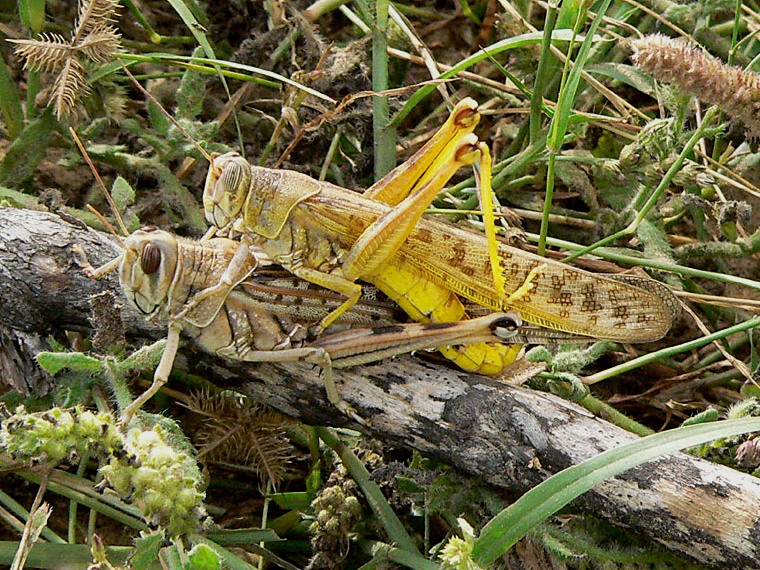
“They can destroy 192 million kg of vegetation in two days”; Facts about the locusts that have invaded Uganda
Baca Juga

The invasion of desert locusts that have for long caused havoc in neighbouring Kenya has now been confirmed in Uganda.
“A swarm estimated to be about 3,000 has landed in Amudat this afternoon,” Moses Kizige, the State Minister for Karamoja told the Nile Post on Sunday.
Government has since said the UPDF has already assembled a team to assist the Ministry of Agriculture in ground spraying and that the team is on standby at Olilim barracks.
“The OPM Disaster department has delivered to Olilim Barracks to facilitate the spray teams items including food (15 tons rice, 15 tons Maize flour) ; other logistics -( tents, sleeping mats, water containers, cooking , eating vessels among others,” Martin Owor said.
Below are some of the quick facts about the locusts;
The desert locust also known as Schistocerca gregaria is locally referred to as emaathe, enzige and is a short-horned grasshopper in the Acrididae family.
As the world’s most dangerous migratory pest species, the desert locust produces rapidly, migrates over long distances and has the ability to change behavior and appearance under particular environmental conditions.
The desert locust is herbivorous and can stay in one place for 17 hours and if strong enough, can range 3000 miles in their lifetime and an average of 50-300km per day.
According to the Food and Agriculture Organisation, the locusts can live for up to five months, depending on weather and local conditions.
They can lay eggs that can hatch after two weeks, with locusts maturing to adulthood in two to four months on average.
They can destroy about 192 million kilogrammes of vegetation in two days.
Locusts can multiply 10-20 times per generation and an adult female will lay up to 900 eggs in three months.
A swarm size of a square kilometre devours 100-160 tons of vegetation including crops and pasture per day.
An adult locust eats an amount approximately its weight of 2-3 grams per day.
Locust movement is determined by wind patterns and vegetation availability and primarily feeds on green vegetation.
These Locusts migrate in swarms of between 40 – 80 million insects whereas some swarms of a billion insects have also been reported.
Desert locusts cause massive destruction of green vegetation including crops and as such, famine would set in as precautionary measure store enough food.
What to do
Contact your nearest extension worker on advice on food storage facilities if you don’t have granaries in your home or neighborhood.
Report the presence of the swarms or hopper bands (millions of young ones – instars moving together) to local authorities. Government will then intervene with ground and aerial spraying for control in a relatively short time.
The post “They can destroy 192 million kg of vegetation in two days”; Facts about the locusts that have invaded Uganda appeared first on Nile Post.

0 Response to "“They can destroy 192 million kg of vegetation in two days”; Facts about the locusts that have invaded Uganda"
Post a Comment